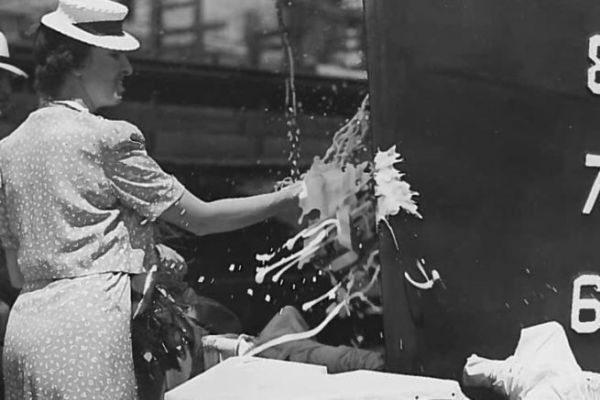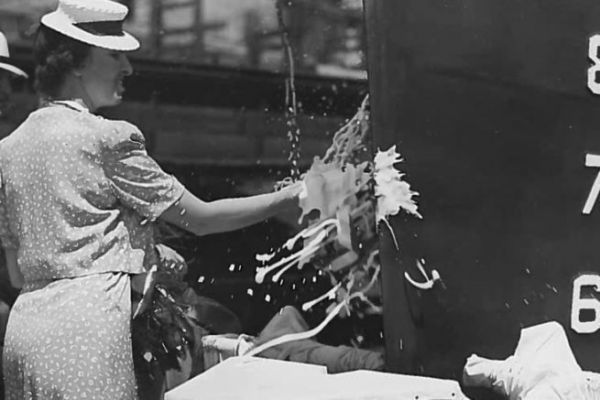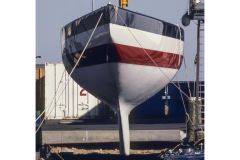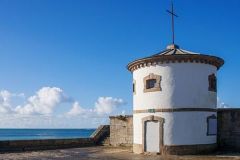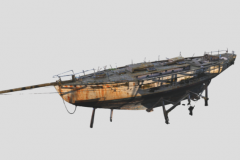Over the centuries, the vast expanses, imposing power and inherent uncertainty of the sea captured the imagination of early sailors, who instinctively sought divine protection from the vagaries of wind and water. From ancient divinities to Christian symbols, let's explore how this tradition originated.
Bloody ceremonies
The immense size, power and unpredictability of the sea certainly impressed the first sailors to venture far from shore. Instinctively, they sought divine protection against the capricious nature of wind and water. As early as the third millennium B.C., a Babylonian story describes the rebuilding of a ship culminating in a ritual offering:
"The openings to the water, I stopped ;
I looked for cracks and missing parts and repaired them;
Three sari of bitumen I poured outside;
To the gods, I offered oxen in sacrifice
Among the Babylonian deities invoked was Tiamat, the primordial Babylonian goddess of the salty sea, allied with the god of fresh water, Abzu. As the personification of chaos, she was opposed to Marduk, the sovereign god of learned calculations. Sailors thus sought her assistance in navigation to estimate trajectories. Ninlil, goddess of the wind, was also sought after in this quest for divine protection at sea.

In ancient Greece, the ancestor of the boat blessing dates back to the time of the Argonauts. Inspired by the legendary quest for the Golden Fleece led by Jason and his companions aboard the Argo, Greek sailors were already practicing a ritual laden with symbolism before setting out to sea, involving the sacrifice of a bull's blood offered in homage to Poseidon, the capricious god of the seas. This blood was poured over the bow of the ship to ensure divine protection during perilous voyages. Sailors believed this would appease Poseidon's wrath and avert devastating storms and other marine dangers.
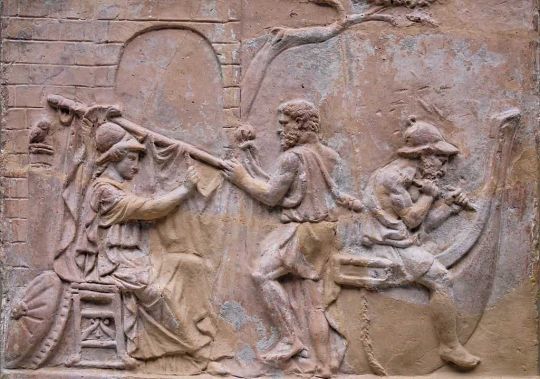
Between the 8th and 11th centuries, the Vikings, renowned for their daring maritime expeditions, also had their own practices for launching a new drakkar into the sea. Their bloodthirsty rituals reflected the ferocity of their warrior culture. Human blood, sometimes from vanquished enemies, was spilled on the hull to secure the favor of the Nordic gods and ensure successful voyages. Among the deities invoked during the departure ceremony, Odin occupied a central place.
As the principal god of Norse mythology, he was associated with travel and wisdom, making him a key figure in Viking sailors' prayers. Thor, the god of thunder, was also sought after by sailors hoping to benefit from his power to ensure a safe crossing, far from storms and maritime dangers.
As for Njörd, god of the sea and wind, the Vikings associated their success in fishing and maritime trade with his benevolence, asking him to watch over their voyages and guarantee favorable conditions at sea.

As early as the 13th century, ship launches in the Ottoman Empire were accompanied by prayers to Allah, the sacrifice of sheep and appropriate festivities.

For many civilizations, ship blessing rituals were thus imbued with mysticism, symbolizing the deep connection between divine forces and sailors seeking protection. Over time, these once brutal practices gave way to more symbolic ceremonies.
Avoiding blood
With the Christianization of empires, practices evolved. In ancient Greece, participants in ship launches crowned their heads with olive branches, drank wine to honor the gods and poured water over the new ship as a symbol of blessing. Altars were carried on board Greek and Roman ships, and the practice continued well into the Middle Ages.
The altar was usually placed on the forecastle. On modern U.S. Navy ships, the forecastle area still retains a special ceremonial significance.
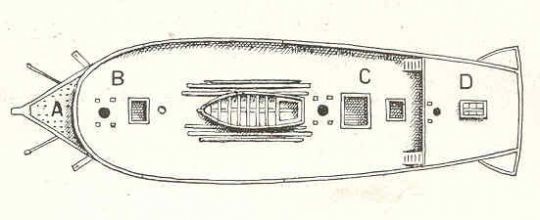
A. Poulaine; B. Gaillard d'avant; C. Gaillard d'arriere ; D. Dunette
Chaplain Henry Teonge of the British Royal Navy left an interesting account of the launch of a warship, a 23-oar brigantine, by the Knights of Malta in 1675 :
''Two brothers and an assistant entered the vessel, and kneeling, prayed for half an hour and placed their hands on each mast and other parts of the vessel, and sprinkled it entirely with holy water. Then they went out and hoisted a pennant to signify that it was a warship; then, with one blow, they pushed it into the water
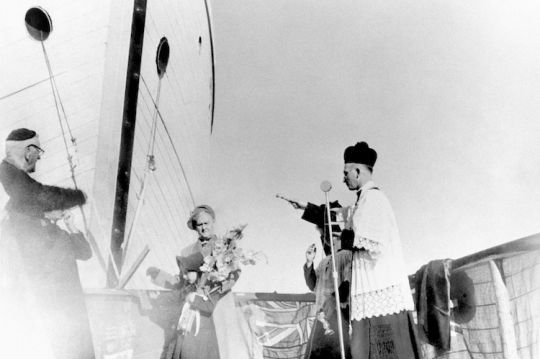
Over time, the cruelty of the rituals gave way to less macabre alternatives. Blood was replaced by red wine or holy water. The English expression A ship that hasn't tasted wine will taste blood!" evokes the idea that if a boat has not been properly blessed with wine, it could suffer harmful, even tragic consequences, symbolized by the "taste of blood".
In any case, while some people laugh when they say that the bow glides better in the sea when it has first been well watered, some sailors prefer to say that it's better to drink the wine than to lose it!

 /
/ 